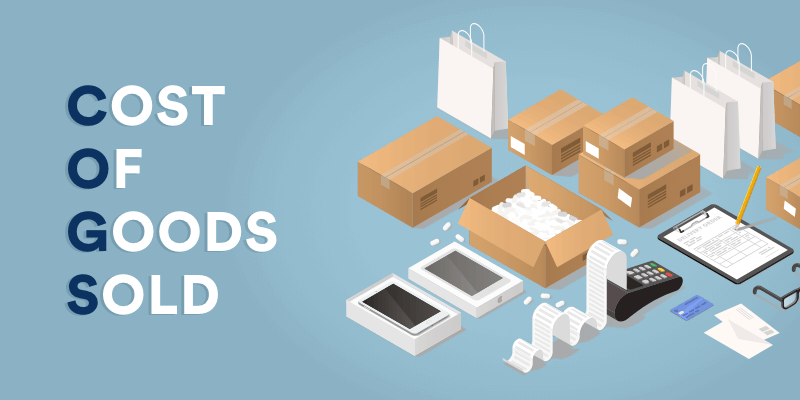Inventory Turnover Ratio: Definition, How To Calculate and Best Practices
Working as an eCommerce business owner, your customers from the world outside can check and purchase your items instantly. This enables your inventory to move much fast rather than in brick-and-mortar shops. As the inventory is perfectly managed, it can help you reach long-term success for your online business, which makes your inventory turnover ration become essential topics to know what is happening.
This article will get you covered Inventory Turnover Ratio: Definition, How To Calculate, and Best Practices.
What is inventory turnover?
Inventory turnover is the number of times each company is selling as well as replacing its goods inventory during a time. Take note that inventory turnover can give you insight into how your company can control costs and how effective your sales efforts become.
-
The higher your inventory turnover is, the better a high inventory turnover means companies are selling items fast, and the demand for their existing products.
-
On the other hand, low inventory turnover is more likely to show weak sales, then decreasing the requirements for any company’s items.
-
Inventory turnover offers you an insight to check if an enterprise manages its stocks appropriately or not. This company might have overestimated the requirements for their items, then bought many products shown by low turnover. On the contrary, in case of the fact that inventory turnover is extremely high, they might not purchase enough inventory; hence, they might miss out on this opportunity.
-
Inventory turnover indicates if sales from a company and purchasing departments are in sync or not. Perfectly, inventory should match sales. It can be a little bit expensive for different enterprises to keep inventory, which does not sell. That is why inventory turnover becomes part of sales effectiveness indicators and aids you in managing the operating costs. Regarding an offered amount of sales, taking advantage of less inventory to perform will get inventory turnover well improved.
KEY TAKEAWAY
-
Inventory adds all items each firm includes in its stock, which will be sold.
-
Inventory turnover shows how often your company is selling and replacing its stock of items in a period of time.
-
The formation for inventory turnover ratio is known as the item’s costs that will be sold and divided by the average inventory for a similar period.
How to calculate inventory turnover ratio?
Many of you might be asking how to calculate inventory turnover ration, then don’t miss out on this part.
To calculate your inventory turnover rates, you might have to know your cost of items that are sold and your average inventory.

Cost of goods sold (COGS)
You can figure out the COGS from the inventory software, yearly income statement, and accounting system. In case you have to do weekly and monthly income reports, you can use those numbers too even though annual income is one of the most popular as well as useful in the longer-time period.
Besides, you can calculate COGS from your balance sheets at the beginning and the end of your period:
COGS = Beginning Inventory + Net Inventory Purchases - Ending Inventory
For example, of your beginning inventory is USD 100,000 and there remained net purchases of USD 240,000, and the ending inventory was USD 120,000; hence, the COGS would like to be the following:
COGS = USD 100,000 + USD 240,000 - USD 120,000 - USD 220,000

Average Inventory (AI)
Take a closer look at the formula for average inventory:
Average inventory = (Beginning Inventory + Ending Inventory) / 2
It means average inventory is exactly the average of beginning inventory, along with inventory for the designed period.
You can kindly take a look at the above example. The AI will be like the beginning inventory of USD 100,000 and the inventory of USD 120,000; the AI will be like:
Average Inventory = (USD 100,000 + USD 120,000) / 2 = USD 110,000
Inventory turnover ratio
You can calculate the inventory turnover ratio by getting the cost of items divided by the average inventory.
Inventory turnover ratio = COGS + Average Inventory
To get this example finished, COGS of USD 220,000 that is divided by the average inventory of USD 110,000 will propose as below:
Inventory turnover ratio = $220,000 ÷ $110,000 = 2
Whenever you have your inventory turnover ratio, you will see how your business is well-performing. Let’s dig deeper, and you will be able to find out where your own business becomes successful and, of course, where it might need some work from you.
Examples of inventory turnover ratio: Coca Cola
As you might not know, the time a company might take to sell out its inventory can be various depending on the industry. Take note that grocery chains and retail stores will own a much higher inventory turning rate since they definitely are selling low-cost items spoiling fast and requiring greater managerial diligence.
Enterprises manufacturing heavy machinery like air plans will consist of a lower turnover rate since every item can sell for millions of dollars, then taking the additional period of time to create before selling. Also, hardware firms can take their inventory four times per year; meanwhile, department stores can turn their own inventory six and seven times annually.
In this section, we would like to introduce you to a real-world example. Its income statement in 2017 stated that the cost of products sold was USD 13,256 million, then its average inventory value from 2016 to 2017 was USD 2,664 million. USD 4,974 million is the total number of inventory turns from Coca-cola. You can easily compare this rate to other companies in the same field to figure out how perfectly Coca-cola is performing. Also, you can find out that the average inventory for its competitors was 8.4 each year, which means that they are selling the items faster than Coca-Cola during the year. This is because of different elements; hence, it is important to understand this firm’s financial statements before accompanying notes to get the whole picture.
Even though Coca-Cola’s inventory turn rate is low, other metrics are still financially powerful, which is stronger than other competitors for the same industries. It is not likely that Coca-cola’s inventory owns some issues with lost value for its stronger economics.
You can take inventory analysis as the extra step by using its inventory turn rate to get the number of days it can take for business calculated to help clear the inventory. This is considered as the day’s sales of inventory.
Let’s retake the example of Coca-Cola. You can divide the whole number of days in an entire year by Coca-cola’s inventory turn ratio, which was counted 4.974. The correct answer 73.38 indicates the average number of days it might take this company to sell its inventor. You might understand that the inventory turnover ratio represents how well Coco-cola can turn the inventory beverages and other items into sales during an entire year. Then the day’s sales ratio will transfer it into every day’s view of this company’s efficiency.

What is a good inventory turnover ratio?
For many other businesses, the perfect inventory turnover ratio is 4 to 6. All businesses are various; however, a ratio between 4 to 6 means this rate you get products restocked is ideally balanced within your sales.
-
You do not run out of items; hence, it is easy to meet the customers’ requirements.
-
You do not own lots of unsold items that choke up your warehouse.

How to increase your inventory turnover ratio?
You can have several choices on how to deal with this issue if you see your inventory turnover is low. The first thing you have to do is decreasing the average amount of current inventory. There are a few strategies that you can take advantage of using to get those things done. Let’s refer to the following:
Pre-orders
Let’s stimulate pre-orders between your beloved customers. Not all businesses can do that, but the pre-orders are incredible since they assist you in gauging the requirements and exciting new items. It also allows you to raise funds. It also allows you to raise funds.
Promotions
You can take advantage of promotions to help to deplete particular inventory products, then increasing your overall sales. Promotions are very helpful in generating a better relationship with your customers since everybody loves sales or discounts. If it can catch on, chances are providing you with free marketing that can result in the development of your business in the long-term.
Buy less stock but more often
You are allowed to change how and when you purchase your stock to deal with the problem of low inventory turnover ratios. For instance, let’s purchase for one-month demand instead of the demand you expect for a year. As you are buying less stock, but with a frequent level, you are reducing the risk of losing money on items you do not sell. Also, this can free up storage space and capital for new items, which can lead to a lack of sales data. This simply means purchasing less stock more often can lower lots of different risks.

How to effectively manage your inventory?
Inventory management is a customizable part of your business. However, the optimal system van varies depending on every company.
By the way, each business had better try to delete human error from the inventory management as much as possible. That means making use of the advantages of inventory management software. In case you are running your own business with Shopify, your inventory management will be well organized. If you are selling on Magento platform, Magestore POS might be your ultimate choice to streamline your business operation by integrating your POS with Magento inventory management software.
No matter what kind of system you are using, you should follow 8 techniques below to help you enhance your inventory management, along with cash flow.
1. Set par levels
You can control your inventory management much easier by making use of setting par levels for every item. Par levels are known as the minimum amount of items that are on hand at all times. As the inventory stock dips below predetermined levels, you can understand, it is time to give more orders.
For good arrangement, you can order the small quantity that you can get back above par. Par levels can be various depending on products as well as based on how quickly items are selling, then how long it might take to get it back on stock. Even though setting up bar levels can request decision-making upfront and research, owing them in your hand will get the order of process systemized. It makes it easy for you to make your own decisions fast and enables your staff to decide on your behalf.
One thing you had better remember is the conditions can change during the time. You had better check par levels several times during the entire year to clarify they make sense. In case something changes, you should not be afraid to change your own par levels up and down.
2. First In First Out (FIFO)
For those who have no idea about FIFO, FIFO means First - In - First - Out is a critical principle of your inventory management. In other words, your oldest stock can get sold first, but your newest one. This is typically vital for perishable items so that you do not end up with unsellable spoilage.
It is also ideal for performing FIFO for non-perishable items. In a case similar boxes always sit at the back, they are likely to get worn out. More than that, packaging design, along with features, usually change. And we guest you do not wish to end up something obsolete you cannot sell.
To manage FIFO systems, you might need to have an organized warehouse. This means that you can add new items from the back, or you have to make sure that old items will stay at the front. Should you work with warehousing, followed by fulfillment service, they might do this; however, it is good to call them and get confirmation.
3. Develop relationships
Take note that managing a relationship is part of successful inventory management. Whether you want to return slow-selling products to pay the way for a new item or troubleshoot manufacturing problems, restock fast sellers or expand your storage space temporarily, it is crucial that you have to build up a strong relationship with the supplier. Then, they are willing to work with you to deal with problems.
Particularly, a good relationship will help you go for a long-time period. Keep in mind that minimum order quantities can be negotiable. Hence, you should not be afraid to request a low minimum so that you do not need to carry much inventory. And an ideal relationship is not only friends. It is also proactive and clear communication. You can let your own supplier know when you expect an increase in selling; hence, they can adjust their production. You should tell them that you know as an item is running against the schedule so that you can stop current promotions and look for alternatives.
4. Contingency planning
Lots of problems related to inventory management can arise. Those kinds of issues can somehow ruin your business. For instance:
-
Your sales can unexpectedly spike, and you are overselling your stock.
-
You might have trouble with cash flow shortfalls and be unable to pay for an item you desperately need.
-
What will happen to your warehouse? Your warehouse will not have enough room to get your seasonal spike to accommodate in sales.
-
You will have fewer items than you expected due to a miscalculation in inventory
-
A slow-moving item will mainly occupy your own storage space.
-
Your manufacturer can run out of your item, and your orders will be full.
-
Your manufacturer can discontinue your item without leaving any notification.
If a problem happens, it is not essential, but you should know when and configure your risks and prepare the contingency plan. And how will you respond? What is your next step to help you solve those problems, and how will issues influence your business.
5. Regular auditing
Regular reconciliation is considered as vital. In most cases of study, you will count on reports and software from the warehouse to know how many items you are having on the stock. But, it is also crucial for you to make sure every fact can match up. And to help you achieve this goal, there are some methods below:
Physical inventory
In general, a physical inventory is that the practice counts your inventory at once. Many businesses can do this at the end of the year since it relates to filing income tax and accounting. Although physical inventories are only completed once every year, it can become disruptive to your business. In case you are finding a discrepancy, it must be hard to get the issue pinpointed as you are looking back at the whole year.
Spot checking
Should you work on a full physical inventory at the year-end and are having problems, or are having lots of items, you might wish to begin spot-checking during an entire year. It means opting for an item and counting it. This is not completed on a schedule and is regarded as supplemental to your physical inventory. Mainly, you want to spot-checking problematic and fast-moving items.
Cycle counting
Rather than working on afull physical inventory, several businesses are using cycle counting to get their inventory audited. Instead of a complete count at year-end, cycle counting can spread out reconciliation in a year. Every day, week, or month, different products are well checked on their rotating schedule. There exist various methods of choosing which kind of products to count when, but, generally speaking, higher-value items are counted regularly.
6. Prioritize with ABC
Some items need your attention than others. Therefore, it is good to use an ABC analysis to allow you to prioritize your inventory management by getting products separated. You can do this by going through your item list before adding products to one of the three categories:
-
- High-value items with a low sales frequency
-
- Moderate value items with an average sales frequency
-
- Low - value items with a high frequency of sales
Products in category A ask for frequent attention since their own financial effect is vital, but their sales are getting unpredictable. Products belonging to category C ask for less oversight since they have smaller financial effects, and they are turning over constantly. Products in category B will fall somewhere.
7. Accurate forecasting
An important part of good inventory management can come down to predicting demand. You make no mistake, but it is hard to do. Countless variables can be involved, and you will never understand what is coming; however, you can try to come close. Below is the list of several things you should look at for future sales projects:
-
Trends in the market
-
Sales during the similar week last year
-
Growth rate this year
-
Guaranteed sales from subscriptions and contracts
-
Seasonality and the overall economy
-
Future promotions
-
Planned ad spent
If there is something that can help you generate accurate forecasts, make sure to refer to it.
8. Consider dropshipping
Dropshipping is known as a perfect scenario from inventory management perspectives. Rather than being asked to include inventory as well as ship items yourself, the wholesaler and manufacturer can take care of you no matter third-party logistics. In general, you can completely remove your inventory management from your own business. Although you wish to use dropshipping to test your new inventory before you invest in large orders, it can become a great extra for your business.
As you might know, there remain many manufacturers and wholesalers are advertising dropshipping as services even though your suppliers do not do that. This can be a selection. You should not be afraid to ask for this. Even though items cost more than bulk orders, you do not need to worry about the fees that are related to holding storage, inventory, or fulfillment. You can test dropshipping with Oberlo for free today.

Conclusion
Take note that you can help your own business reduce costs, analyze sales patterns, keep your business becoming profitable, predict future sales, and prepare the arising issue with a fully-effective inventory management system in place. With good inventory management, your business will have a better opportunity for survival and profitability. Taking control of your inventory will prevent money from going away. Furthermore, choosing the right inventory management techniques for your stores should be implemented as soon as possible. If you find our complete guide on inventory turnover ratio, don’t forget to help us share this on your social media.
New Posts






